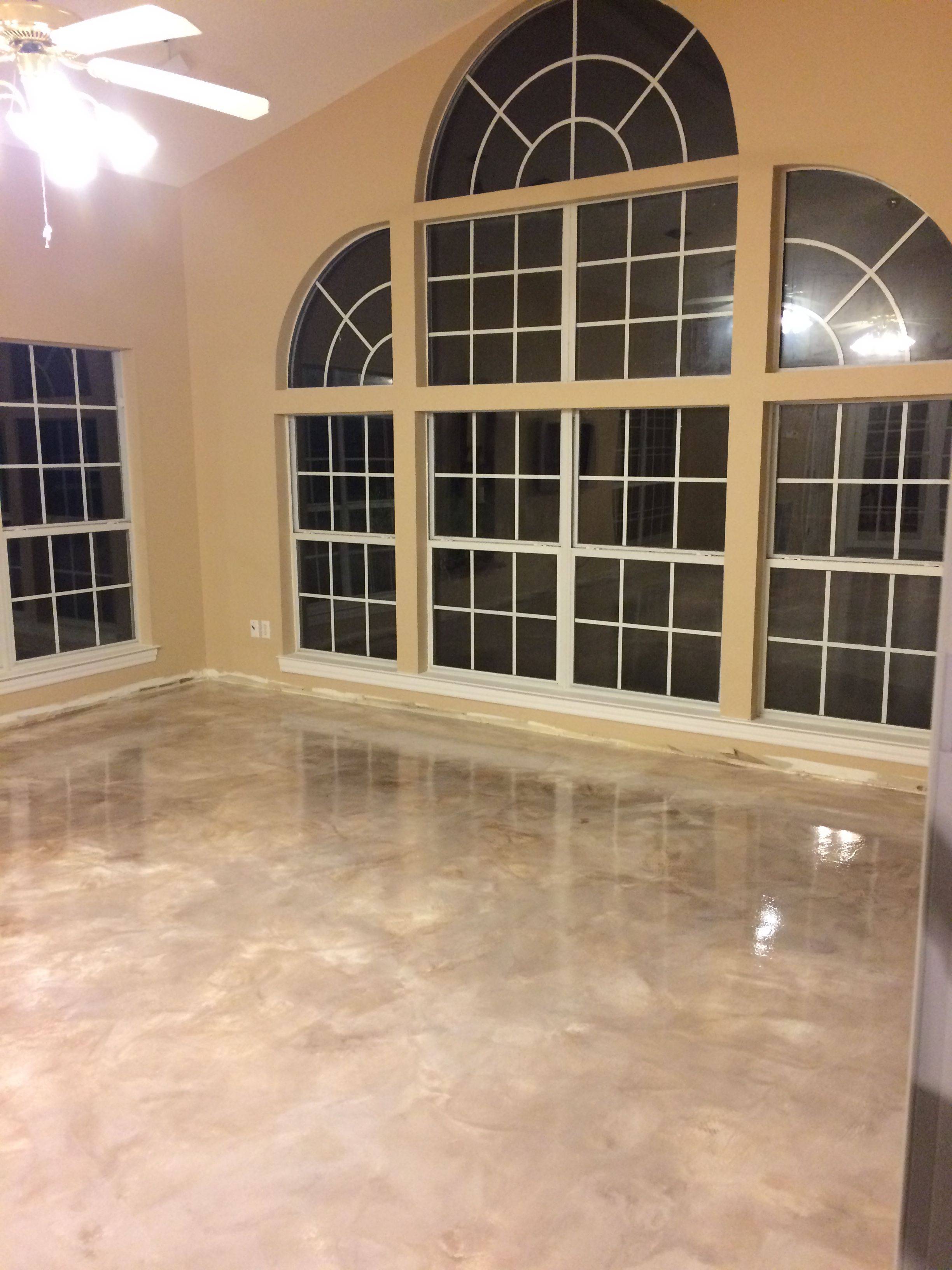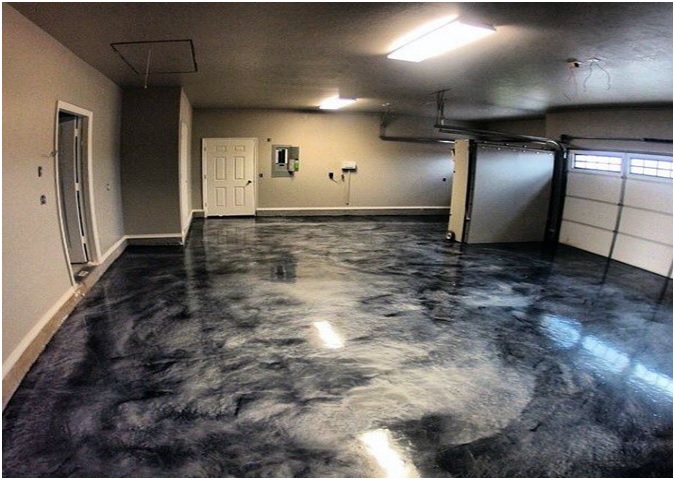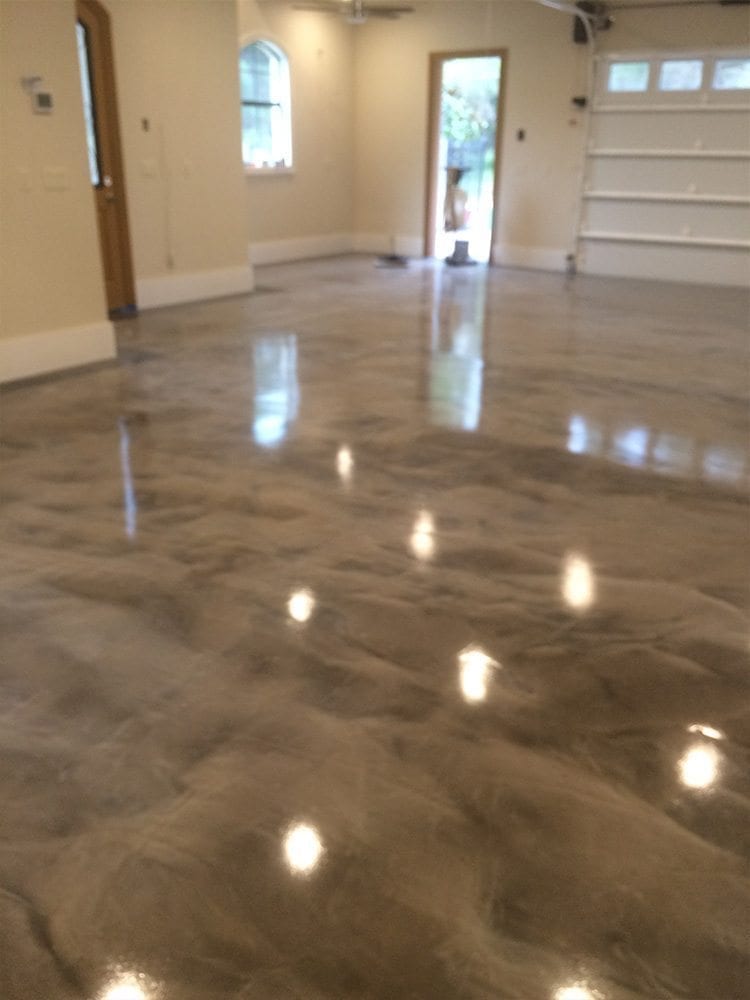Maintenance Challenges in Epoxy Flooring
Epoxy flooring has gained popularity for its durability and resistance to stains and chemicals. However, maintaining epoxy floors comes with its own set of challenges. From regular cleaning to addressing damages, here are some maintenance challenges commonly faced with epoxy flooring.
- Regular Cleaning Requirements: While epoxy floors are known for their easy-to-clean surface, they still require regular maintenance to preserve their appearance and functionality. Dust, dirt, and debris can accumulate over time, necessitating regular sweeping and mopping. Additionally, spills should be promptly cleaned to prevent staining.
- Susceptibility to Scratches and Scuffs: Despite their toughness, epoxy floors can still be susceptible to scratches and scuffs, especially in high-traffic areas. Heavy furniture or equipment dragged across the surface can leave marks, requiring periodic touch-ups or refinishing to maintain the floor’s smooth finish.
- Cracking and Peeling: Over time, epoxy flooring may develop cracks or start peeling, particularly in areas exposed to heavy loads or extreme temperatures. These issues not only compromise the aesthetics of the floor but also pose safety risks. Addressing cracks and peeling often requires professional repair and reapplication of epoxy coatings.
- Moisture and Humidity Management: Epoxy floors are sensitive to moisture and humidity levels, which can affect their adhesion and longevity. In environments with high moisture levels, such as basements or garages, proper ventilation, and moisture barriers may be necessary to prevent delamination and other moisture-related issues.
- Chemical Exposure: While epoxy floors are resistant to many chemicals, prolonged exposure to certain substances can cause damage. Spills of acidic or corrosive chemicals should be promptly cleaned to prevent etching or discoloration of the epoxy surface. Additionally, using harsh cleaning agents can degrade the epoxy coating over time.
- Professional Maintenance and Repairs: Some maintenance tasks and repairs, such as recoating or addressing extensive damage, may require professional expertise. Hiring experienced professionals ensures that maintenance and repairs are done correctly, prolonging the lifespan of the epoxy flooring.

Susceptibility to Temperature Fluctuations
Epoxy flooring is known for its resilience, but it does have vulnerabilities, particularly when it comes to temperature fluctuations. Understanding how temperature variations can impact epoxy floors is crucial for maintaining their longevity and appearance.
Expansion and Contraction: Epoxy floors can expand and contract in response to temperature changes, especially in environments with significant temperature fluctuations. This expansion and contraction can lead to cracks and delamination if not properly addressed.
Extreme Heat: High temperatures can soften the epoxy resin, making it more susceptible to damage from heavy objects or equipment. In industrial settings where heat-generating machinery is present, additional measures may be needed to protect the epoxy flooring from heat-related damage.
Cold Temperatures: Cold temperatures can make epoxy floors brittle and prone to cracking, especially in areas exposed to freezing temperatures or rapid temperature changes. Cold-weather installation of epoxy flooring requires special considerations to ensure proper curing and adhesion.
Thermal Shock: Rapid temperature changes, known as thermal shock, can stress the epoxy flooring, leading to cracks or delamination. Areas exposed to thermal shock, such as freezer rooms or kitchens with hot cooking equipment, require epoxy formulations specifically designed to withstand these conditions.
Temperature Regulation: Proper temperature regulation is essential for maintaining the integrity of epoxy flooring. In environments with extreme temperatures, such as warehouses or food processing facilities, HVAC systems should be used to control temperature fluctuations and minimize stress on the epoxy surface.
Seasonal Maintenance: Seasonal temperature changes may require additional maintenance measures for epoxy flooring. Inspecting the floor for signs of damage, such as cracks or delamination, and addressing any issues promptly can help prevent further damage and prolong the lifespan of the floor.
Limited Aesthetic Options and Design Flexibility
Despite its durability and versatility, epoxy flooring comes with limitations in terms of aesthetic options and design flexibility. While it offers various benefits, including ease of maintenance and resistance to stains, understanding its design limitations is essential for making informed decisions about its application.
Limited Color Choices: Epoxy flooring typically comes in a limited range of colors compared to other flooring options. While there are standard colors available, custom color options may be limited, making it challenging to achieve specific design aesthetics or match existing décor.
Uniform Appearance: Epoxy flooring tends to have a uniform appearance, lacking the natural variations and textures found in materials like wood or stone. This uniformity may be desirable in some settings but can limit design options for those seeking a more varied or textured look.
Difficulty in Achieving Complex Designs: While epoxy floors can be customized with decorative additives like flakes or metallic pigments, achieving complex designs or intricate patterns may be challenging. The application process requires precision and skill to ensure uniform distribution of additives and consistent results.
Limited Flooring Options for Residential Settings: In residential settings, epoxy flooring may be limited to specific areas like garages or basements due to its industrial appearance. While it offers durability and ease of maintenance, homeowners may prefer more aesthetically pleasing flooring options for living spaces.
Incompatibility with Certain Substrates: Epoxy flooring may not be suitable for all substrates, limiting its applicability in certain environments. Proper surface preparation is crucial for ensuring adhesion and longevity, and incompatible substrates may require alternative flooring solutions.
Long-Term Design Considerations: When choosing epoxy flooring, it’s essential to consider long-term design implications. While it may meet immediate functional requirements, its limited design options may become a drawback as design trends evolve or aesthetic preferences change over time.
Prone to Chemical Damage: Unveiling Vulnerabilities
Epoxy flooring is renowned for its chemical resistance, making it a popular choice for industrial and commercial settings where exposure to harsh chemicals is common. However, despite its resilience, epoxy flooring is not impervious to chemical damage. Understanding its vulnerabilities to chemical exposure is essential for maintaining its integrity and longevity.
Effects of Chemical Exposure: While epoxy flooring is resistant to many chemicals, prolonged exposure to certain substances can cause damage. Acids, solvents, and other corrosive chemicals can weaken the epoxy resin, leading to discoloration, delamination, or surface degradation.
Surface Degradation: Chemical spills or leaks can penetrate the epoxy surface, causing it to degrade over time. This degradation may manifest as discoloration, surface roughness, or loss of gloss, detracting from the appearance and functionality of the floor.
Etching and Staining: Some chemicals can cause etching or staining of the epoxy surface, particularly if spills are not promptly cleaned. Etching occurs when acidic substances react with the epoxy resin, creating rough patches or pits on the surface. Staining can occur when pigmented chemicals penetrate the epoxy surface, leaving permanent discoloration.
Preventive Measures: To mitigate the risk of chemical damage, proper spill containment and cleanup procedures should be implemented. Chemical-resistant coatings or sealants can provide an additional layer of protection against chemical exposure, prolonging the lifespan of the epoxy flooring.
Compatibility with Specific Chemicals: Not all epoxy formulations are resistant to the same chemicals. When selecting epoxy flooring for a specific environment, it’s essential to consider the types of chemicals present and choose a formulation that offers adequate resistance to those chemicals.
Regular Maintenance and Inspection: Regular maintenance and inspection are essential for identifying and addressing chemical damage promptly. Prompt cleanup of chemical spills and periodic inspection of the epoxy surface can help prevent long-term damage and ensure the longevity of the flooring.
Installation Complexities and Professional Expertise
Installing epoxy flooring requires specialized knowledge and expertise due to its unique properties and application process. While DIY epoxy kits are available, achieving professional-quality results can be challenging without proper training and equipment. Here are some installation complexities and the importance of professional expertise in epoxy flooring installation.
Surface Preparation: Proper surface preparation is crucial for ensuring the adhesion and longevity of epoxy flooring. This typically involves thorough cleaning, repairing cracks and defects, and etching or mechanically abrading the surface to promote adhesion. Achieving the right surface profile requires expertise and specialized equipment.
Mixing and Application: Epoxy flooring materials must be mixed and applied according to manufacturer specifications to achieve the desired results. Improper mixing or application can lead to issues such as uneven coverage, air bubbles, or premature curing, compromising the quality of the finished floor.
Temperature and Humidity Control: Environmental conditions, such as temperature and humidity, can impact the epoxy curing process. Professional installers are trained to monitor and control these variables to ensure optimal curing and adhesion, especially in challenging environments with extreme temperatures or humidity levels.
Safety Considerations: Working with epoxy flooring materials involves handling potentially hazardous chemicals and requires adherence to safety protocols. Professional installers are trained in safety procedures and equipped with personal protective equipment to minimize the risk of accidents or exposure to harmful substances.
Specialized Equipment and Tools: Installing epoxy flooring may require specialized equipment and tools, such as mixing equipment, application tools, and surface preparation machinery. Professional installers have access to these specialized tools and are trained in their proper use, ensuring efficient and effective installation.
Quality Assurance and Warranty: Professional installation of epoxy flooring often comes with warranties and guarantees, providing peace of mind for property owners. Professional installers are committed to delivering high-quality results and addressing any issues that may arise during or after the installation process.
Pros And Cons Of Epoxy Floors Concrete Polish Royal Coating Supply
The Pros and Cons of Epoxy Floors in Your House – Advance
Pros & Cons of Epoxy Flooring Garage Floor Epoxy Contractor
The Pros And Cons Of Epoxy Flooring
Understanding The Pros and Cons of Epoxy Flooring – Floorcube
Benefits And Drawbacks Of Epoxy Floors
Pros And Cons Of Epoxy Floors – TD Painting and Wall Covering
The Pros And Cons Of Epoxy Flooring
Related Posts:











